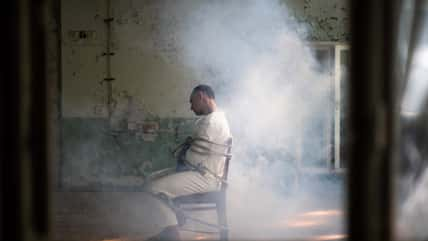In The 17th Century, It Was Believed The “Witch Cakes” Made From Rye Flour And Urine Could Prove Whether Or Not Witchcraft Was Conducted On A Person

In January of 1962, numerous girls who lived in Salem Village, Massachusetts, started behaving erratically.
And it was this uncharacteristic behavior that raised supernatural suspicions and laid the groundwork for the infamous Salem Witch Trials.
One of the earliest young girls who started exhibiting odd behavior included Elizabeth “Betty” Paris, who was only nine years old at the time and the daughter of Reverend Samuel Parris.
Another, Abigail Williams, was a mere twelve years old and the orphaned niece of Reverend Parris. Both girls lived together and, at the same time, began complaining of convulsions and fevers.
Their father’s first instinct was to pray for help and salvation. Reverend Parris also turned to other members of the congregation and local clergy in hopes that the power of prayer would cure the girls’ affliction.
After their efforts yielded no results, though, Betty and Abigail’s father turned to his last resort. The Reverend brought in a local physician named William Griggs and another minister named John Hale.
Both men analyzed the girls and observed their symptoms, searching for any logical cause. But, once they could not determine any physical reason why they had fallen ill, the pair suggested that witchcraft was the cause.
It was at that point that Mary Sibley, one of the Parris family’s neighbors, suggested the idea of baking a witch’s cake in order to reveal whether or not witchcraft was truly to blame.
Back in seventeenth-century England and New England, “witch cakes” were believed to have a magical power that could reveal if physical symptoms were the result of witchcraft or some other illness.

kharchenkoirina – stock.adobe.com – illustrative purposes only, not the actual person
And the baked good, which resembled a spiky bagel, was actually made using rye flour and the urine of the symptom-exhibiting person.
Then, it was supposed to be fed to a dog. And if the dog that ate the witch cake began exhibiting the same symptoms as the afflicted person, then the presence of witchcraft was thought to be “proven.”
Why use a dog, you might be wondering? Well, canines were commonly associated with the devil, and many believed that the pets would even be able to point out exactly what witches in the village had caused ill to victims.
So, after the neighbor Mary Sibley recommended baking a witch’s cake, Reverend Parris obliged. She provided the recipe, which was given to John Indian, an enslaved man who served the Parris family at the time.
And John went on to collect urine from both Betty and Abigail before having another enslaved woman, Tituba, bake the witch’s cake. Tituba then fed the baked good to the dog that dwelled in the Parris household.
Now, this attempt at a “diagnosis” ultimately revealed nothing. Reverend Parris, though, still took the opportunity to denounce the use of any witch’s cake magic in church.
He claimed that it did not matter whether it was completed with good intentions and still represented “going to the devil for help against the devil.”
The neighbor, Mary Sibley, was suspended from communion afterward. And her good standing in the congregation was only restored after she confessed to members of the community.
Both Betty and Abigail then ended up naming and accusing three women of the witchcraft behind their ailments. The first was Tituba, and the other two were local women named Sarah Good and Sara Osbourne.
Osbourne later passed away in prison, and Good was executed in July of that year. Finally, Tituba ultimately confessed to witchcraft– allowing her to narrowly escape execution.
Nowadays, it is generally agreed amongst scholars that the accusations were primarily rooted in community hysteria– with fears of the supernatural being the ultimate primer.
Church politics were also likely at play, as well as the general instability of the time period.
As for the ailments girls like Betty and Abigail claimed to be experiencing, some historians believe that grain, which was contaminated with a fungus known as ergot, might have caused some of the symptoms.
Regardless, though, in 1692 Salem, the idea that witch cakes held the key to the truth played a critical role in the first accusations of witchcraft– which later paved the way to the court trials and executions of nineteen people.
If true crime defines your free time, this is for you: join Chip Chick’s True Crime Tribe
Her Toddler Daughter Told Her Details About Her Past Life And Said She Was Alive In The Year 1438
She Embarrassingly Realized A Little Too Late That She Was Giving Her Neighbors A Free Show
Did You Know That The First Person To Identify A Coronavirus Was A Woman?
Sign up for Chip Chick’s newsletter and get stories like this delivered to your inbox.
More About:Freaky





